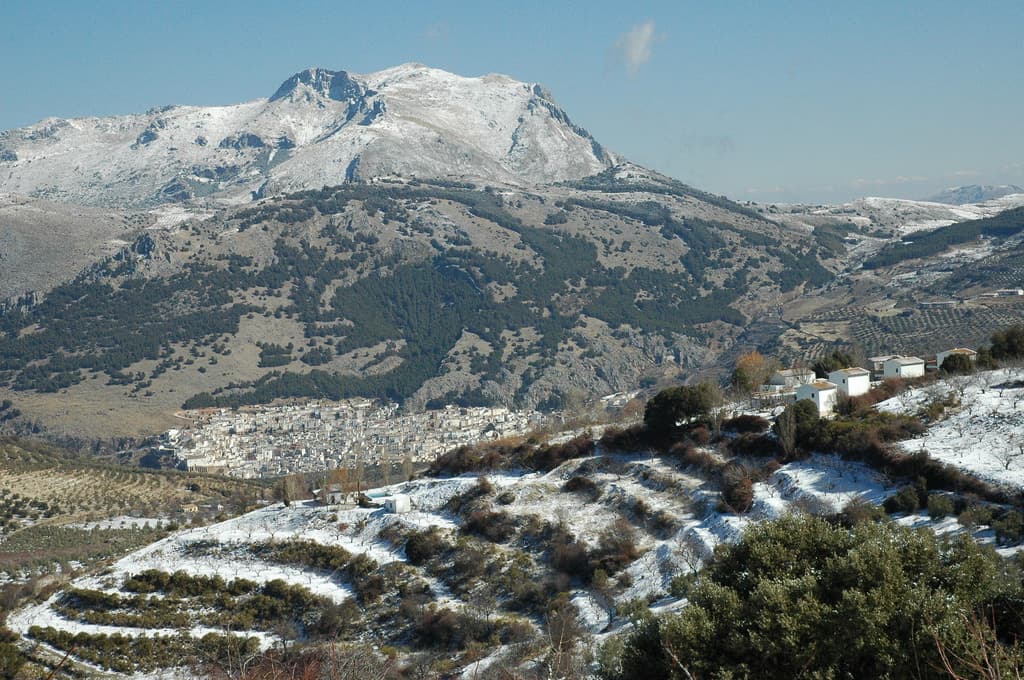Get PeakVisor App
Sign In
Search by GPS coordinates
- Latitude
- ° ' ''
- Longitude
- ° ' ''
- Units of Length

Yes
Cancel
Share ×

Scan the QR code and open PeakVisor on your phone
❤ Wishlist ×
Choose
Delete
Situated in the southeastern corner of Spain, within the autonomous community of Andalucia, Parque Natural Sierra de Sierra Mágina (English: Sierra Mágina Natural Park) is a protected region covering some 190 sq. km (83 sq. mi). The park is well known for its steep, rocky terrain and it is home to 9 named mountains, the highest and most prominent of which is Mágina (2,164m/7,103ft).
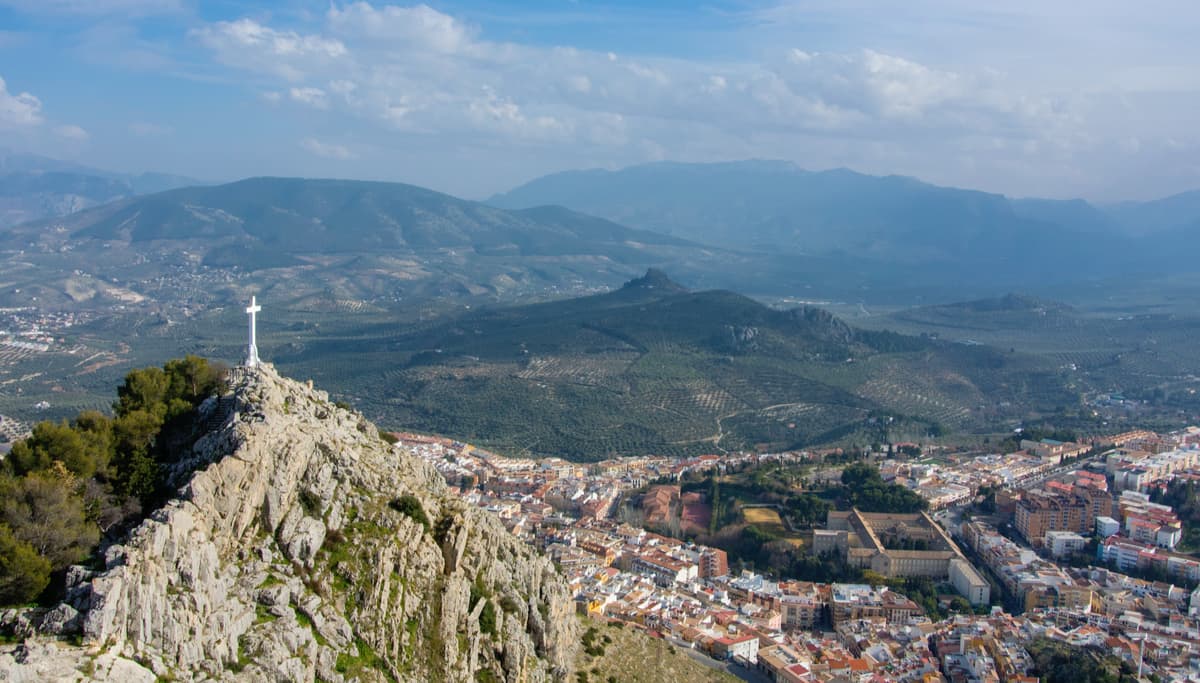
The peaks of Sierra Mágina Natural Park are located within the Andalucian Ranges, which covers much of southern Spain, including the communities of Extremadura, Castille-La Mancha, and Murcia. Sierra Mágina Natural Park is also located close to a number of other Natural Parks and National Parks, including Parque Natural Sierra de Castril and Parque Nacional de Sierra Nevada.
The region that now forms the Natural Park has a rich history dating far beyond the time of the Moors on the Iberian Peninsula (between 700-1500 CE). Remote and often inhospitable, the many caves of the region became great hiding spots for Moorish rebels and bandits during the 10th century.
However, the Moors were not the first inhabitants of these caves. Indeed, Neolithic and copper-aged paintings exist all over the intricate cave system within Sierra Mágina Natural Park. Some sites of interest where you can see this rock art in person include the Cueva de la Granja, Cuevas del Gato, and the Cueva de los Esqueletos.
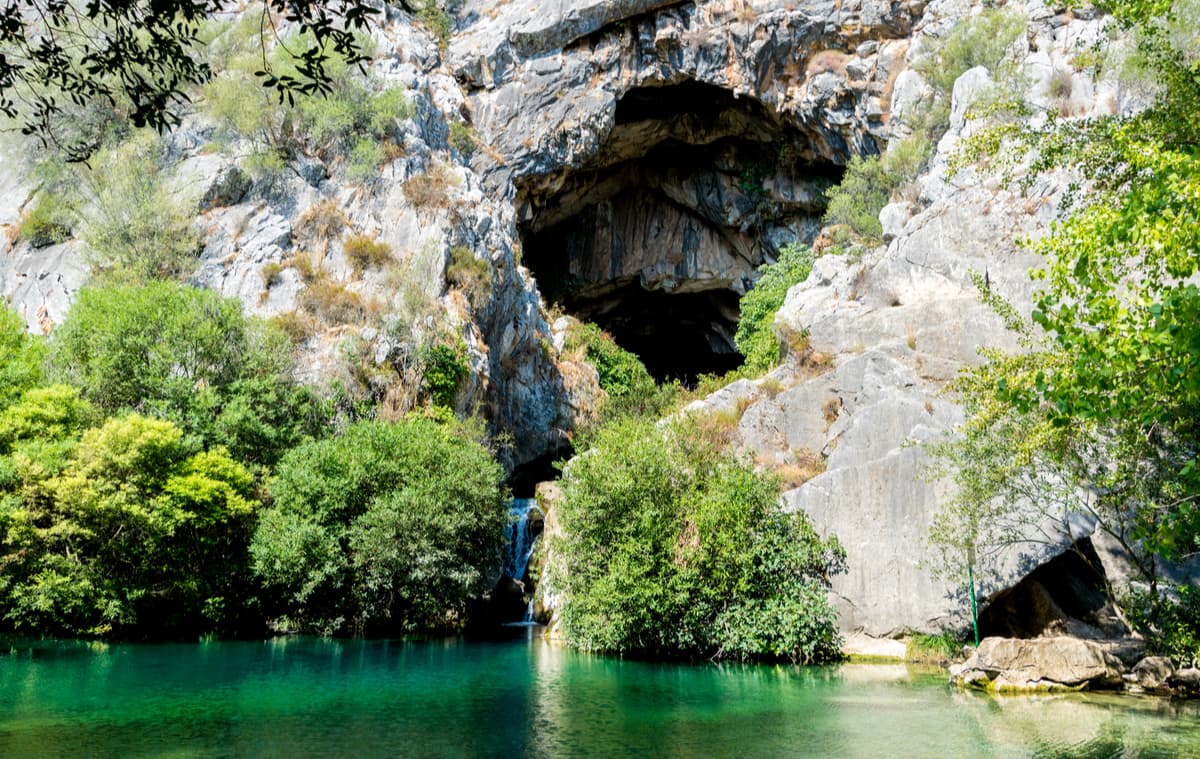
The park itself derives its name from its tallest peak, Mágina, which is also the highest in Jaén Province. Although there are only 9 named mountains within the Natural Park, two crest the 2,000m (6,561ft) mark and many feature barren alpine summits.
Within the park, there is an abundance of flora and fauna, making it a true plant lover’s paradise. High up in the mountains, only the hardiest of plants can survive, some of which are endemic to Sierra Mágina Natural Park.
Below 1,800m (5,905ft), the landscape is dominated by forests of oaks, junipers, and cherry trees. In these forests, there are some incredibly well-preserved holm oaks that date back a few hundred centuries. There is even an endemic and quite rare species of flower within these forests - the Cazorla violet (Viola cazorlensis), which blooms in May.
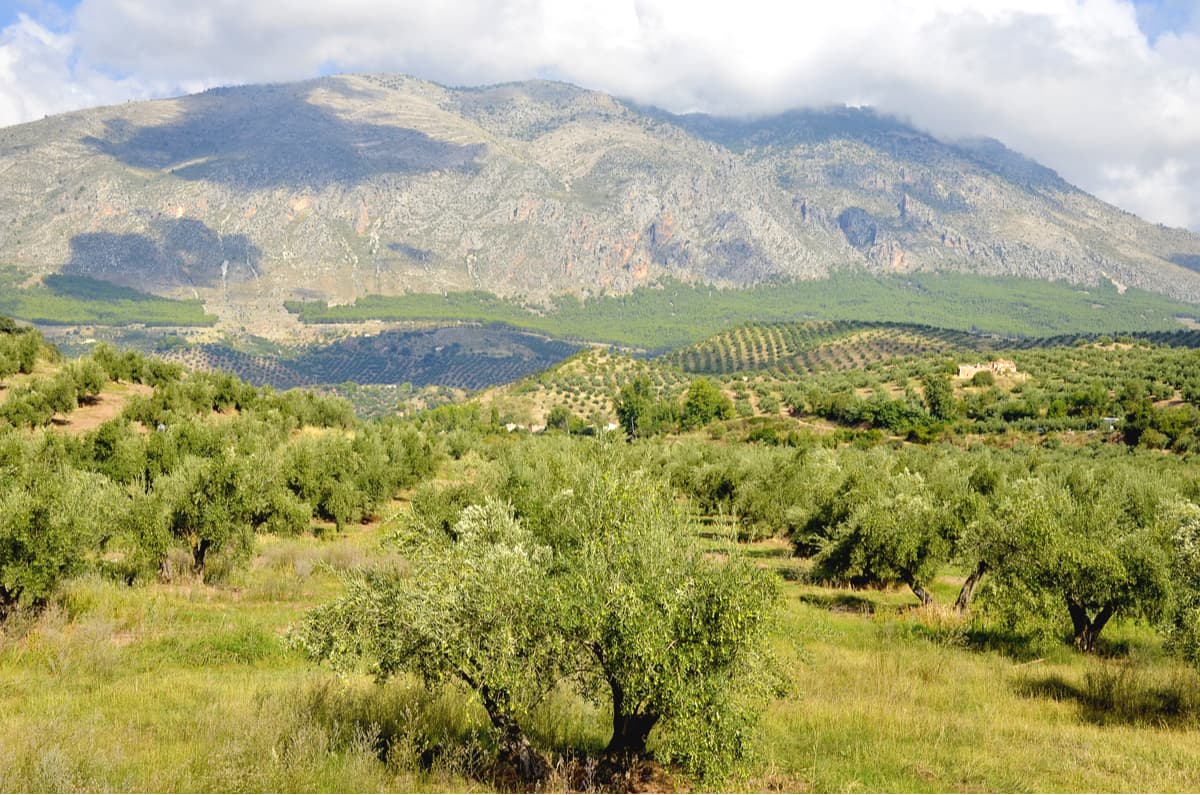
Above 1,800m (5,905ft), and near the summits of Mágina and Cerro Almadén, the land is dominated by Austrian pines, yews, and some long-lived shrubs, such as the hedgehog broom (Erinacea anthyllis). The alpine of the park is also home to a rare and unique blue flowering gromwell (lithodora nitida) and the Jurinea fontqueri both of which are at risk of extinction.
If rare, endemic plants don’t interest you, though, Sierra Mágina Natural Park is also home to a wide assortment of wildlife. Bird lovers can search for the Bonelli’s and golden eagles while others can keep an eye out for sightings of the Spanish ibex. Down below treeline in the park, you can also find the elusive wild boars, martens, wildcats, and foxes - if you’re lucky.
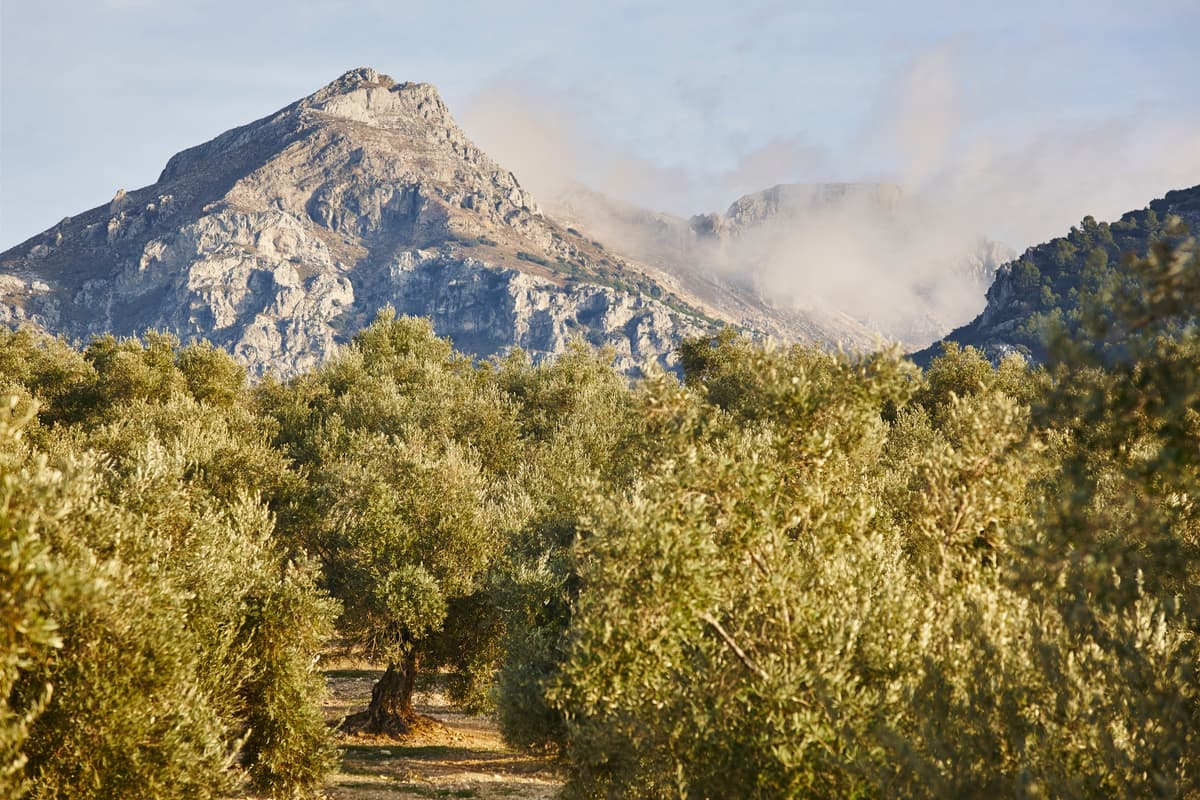
Regardless of why you journey to Sierra Mágina Natural Park, your trip is sure to be unique. With plenty of great trails and sights to see in such a small area, any trip to the Natural Park is one to remember.
Sierra Mágina Natural Park might be small, but it’s packed full of awesome destinations. Here are some places and hikes to check out on your next trip:
This 11km (6.8mi) walk follows a loop path that starts at the Fuenmayor picnic area, just 7km (4.3mi) south of Torres. As you walk, you climb upward through groves of holm oak and cherry trees until you reach the Cascade del Zurreón, a stunning waterfall. Then, you walk onward for some great views of the town of Torres and the surrounding mountains before trekking through olive trees on your way back to the trailhead.
Sendero Las Viñas is a 10km (6.2mi) circular path that starts at the Gibralberca picnic area just northeast of Huelma on the A324. From the trailhead, you walk through old vineyards that once dominated the area and get fantastic views of the Sierra and the Guadalquivir valley below. You can also climb up Mirador Torreón de Cuadros - an 11th-century watchtower - on your walk for even better vistas.
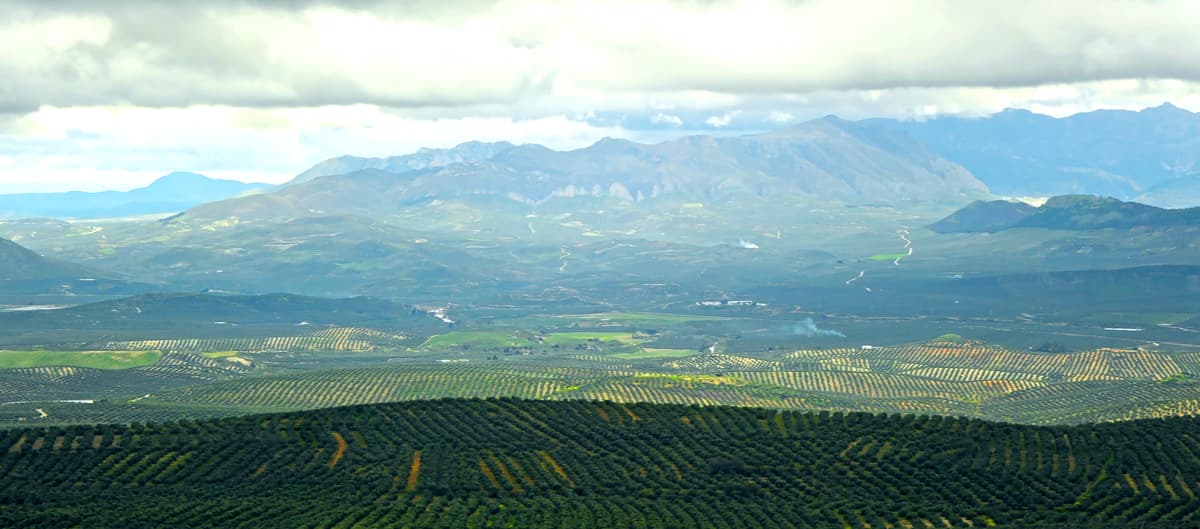
Here are some of the major cities near Sierra Mágina Natural Park where you can stay during your adventure:
The capital of the province of Jaén, the city of Jaén is home to 116,000 people and is located just west of the park. The city is often called the World Capital of Olive Oil, due to its massive annual production of the highly popular oil. While the city does not have an airport, it is the terminus of the Madrid-Jaén train line, which offers high-speed connections between the city and Spain’s capital.

The city of Granada is the capital of the province of Granada in Andalusia, Spain. As one of the largest cities within the community of Andalusia, Granada is home to almost 240,000 people and is a well-known tourist location in southern Spain. The city is located to the south of Sierra Mágina Natural Park and features one of the busiest airports in Andalusia, with great connections around Spain and southern Europe.

The town of Huelma is located in the southern foothills of Sierra Mágina Natural Park. Home to over 6,000 people, Huelma is a great place to start your trip into the Natural Park if you have a car. From Huelma, you can access many of the trails within the park or enjoy some local olive oil in town.
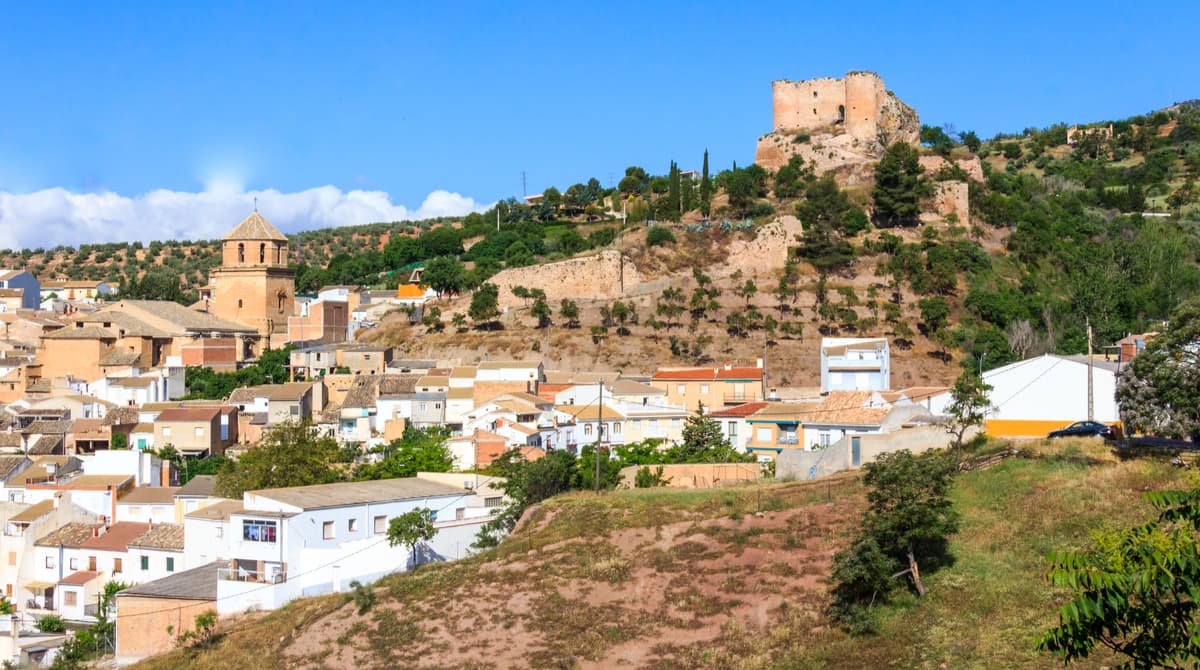
Explore Sierra Magina Natural Park with the PeakVisor 3D Map and identify its summits.





